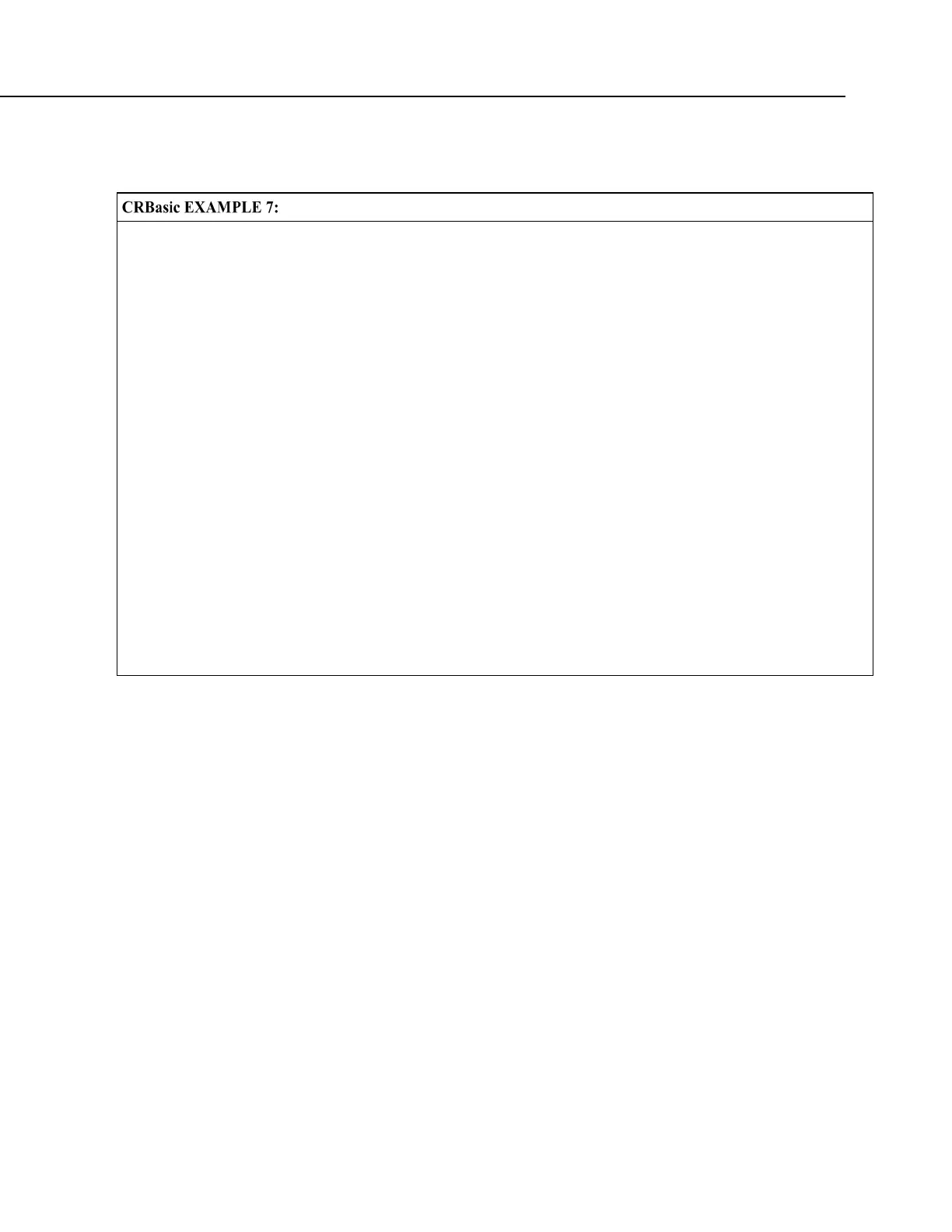Section 7. Installation
works best in practice. CRBasic example Flag Declaration and Use (p. 133)
demonstrates changing words in a string based on a flag.
Flag Declaration and Use
'This program example demonstrates the declaration and use of flags as Boolean variables,
'and the use of strings to report flag status. To run the demonstration, send this program
'to the CR800, then toggle variables Flag(1) and Flag(2) to true or false to see how the
'program logic sets the words "High" or "Low" in variables FlagReport(1) and FlagReport(2).
'To set a flag to true when using LoggerNet Connect Numeric Monitor, simply click on the
'forest green dot adjacent to the word "false." If using a keyboard, a choice of "True" or
'"False" is made available.
Public Flag(2) As Boolean
Public FlagReport(2) As String
BeginProg
Scan(1,Sec,0,0)
If Flag(1) = True Then
FlagReport(1) = "High"
Else
FlagReport(1) = "Low"
EndIf
If Flag(2) = True Then
FlagReport(2) = "High"
Else
FlagReport(2) = "Low"
EndIf
NextScan
7.6.3.4 Using Variable Pointers
A pointer is the memory address of a variable. Use a pointer as a convenient way
to reference the memory location of a variable rather than referencing it by name.
This is useful in a Function() instruction function when parameters are local to the
function and changes to them have no effect on original arguments.
Define a pointer variable using the @ operator. For example:
PTR = @X
Use the ! operator to de-reference a pointer (return the value at the pointer). For
example:
!PTR = Myvar
Use the @ operatore to return the name of the variable stored in a memory
location. For example:
Name=(@)X
Pointer variables must be of type LONG and initialized by the @ operator, or a
variable out-of-bounds error will occur.

